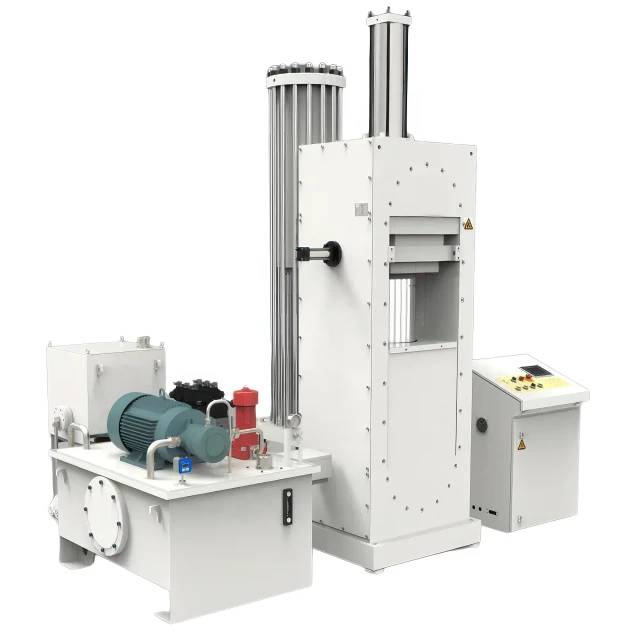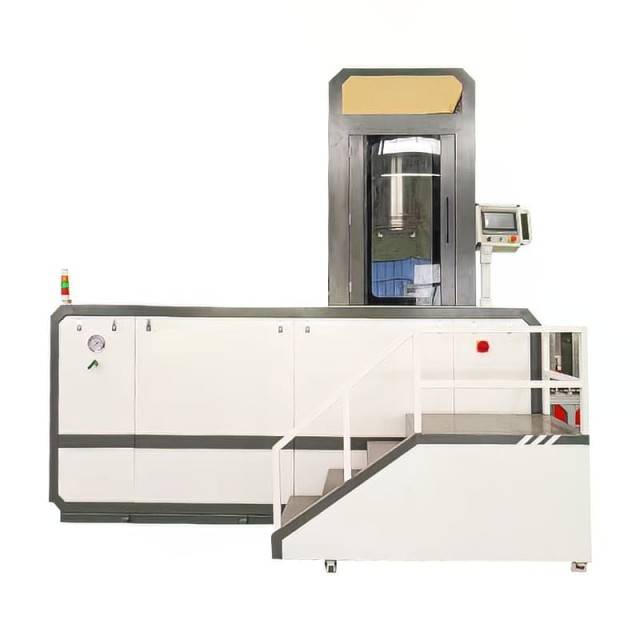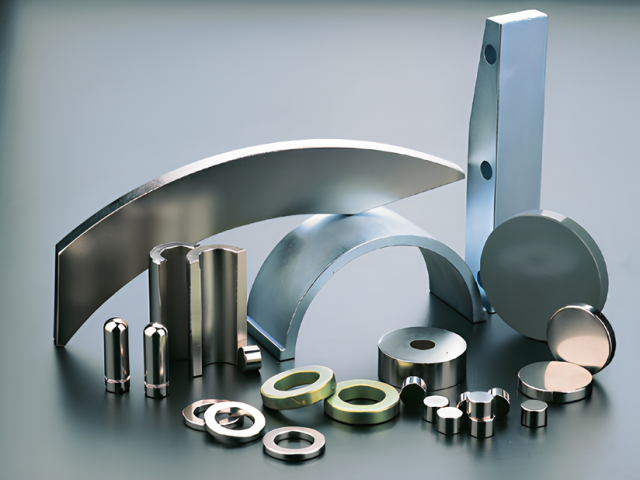Introduction to Isostatic Pressing
Isostatic pressing is a manufacturing process that uses fluid pressure to compress and shape materials into various forms. It involves applying uniform pressure to a material from all directions, resulting in a uniform density throughout the material. The process is commonly used to produce precision parts with intricate shapes, such as ceramics and metal components. Isostatic pressing can be performed at high or low temperatures, known as cold and hot isostatic pressing, respectively. This process is highly beneficial for producing high-quality, high-density materials with minimal defects.
Table of Contents
Benefits of Isostatic Pressing
Isostatic pressing is a manufacturing process that is becoming increasingly popular in recent years because of its ability to produce materials with optimal density. The benefits of isostatic pressing are numerous and significant, which make it a valuable manufacturing process for producing high-quality materials with optimal density and strength.
Increased Strength
Isostatic pressing involves applying equal pressure from all directions to a material inside a pressurized vessel, resulting in a uniform density throughout the material. This process leads to increased strength of the material, making it ideal for use in high-stress applications such as aerospace, defense, and medicine.
Improved Surface Finish
Isostatic pressing can also give materials an improved surface finish. Since the pressure is applied uniformly from all directions, the resulting material has a smoother and more uniform surface than that produced by other manufacturing processes.
Reduction in Internal Defects
One of the most significant benefits of isostatic pressing is the reduction in internal defects such as porosity. The uniform pressure applied to the material during the process ensures that there are no voids or gaps in the material, leading to a more consistent and reliable product.
Flexibility and Versatility
Isostatic pressing can be used to produce complex shapes and parts that cannot be produced using other manufacturing processes. The uniform pressure applied during the process makes it possible to create intricate designs and shapes that meet specific requirements.
Superior Properties
Isostatic pressing is also used in the production of ceramics, where it can produce materials with superior properties such as high thermal conductivity, low thermal expansion, and high hardness. These properties make the resulting materials ideal for use in a range of applications, including aerospace, defense, and medical industries.
In conclusion, the benefits of isostatic pressing make it a valuable manufacturing process for producing high-quality materials with optimal density and strength. The uniform pressure applied during the process leads to increased strength, improved surface finish, and a reduction in internal defects. Additionally, isostatic pressing can be used to produce complex shapes and parts, making it a flexible and versatile manufacturing process.

Cold vs. Hot Isostatic Pressing
Isostatic pressing is a popular method for compacting powdered materials into dense, uniform shapes. There are two types of isostatic pressing – cold isostatic pressing (CIP) and hot isostatic pressing (HIP). Each type of isostatic pressing has its advantages and disadvantages.
Cold Isostatic Pressing (CIP)
Cold isostatic pressing involves pressing powdered materials at room temperature. It is generally faster and less expensive than hot isostatic pressing, but can produce lower density materials. CIP is often preferred for simple shapes and lower density materials. It allows the production of simple-shaped small or large powder compacts with a uniform green density, even for large height/diameter ratio parts. However, it has the disadvantage of requiring subsequent machining in the green compact due to lower dimensional control.
Hot Isostatic Pressing (HIP)
Hot isostatic pressing involves heating the powder in an inert gas to high temperatures and pressures before pressing. HIP can produce higher density materials with better mechanical properties but at a higher cost. It can produce complex shapes and higher density materials, making it suitable for a wide range of applications. HIP is preferred for parts that require high strength and toughness. It can also be used to eliminate residual porosity from a sintered PM part.
Choosing Between CIP and HIP
The choice between CIP and HIP depends on the specific requirements of the manufacturing process and the final product. Achieving optimal density with isostatic pressing depends on several factors, including the material being pressed, the desired density, and the specific application. CIP is generally preferred for simple shapes and lower density materials. On the other hand, HIP is used for complex shapes and higher density materials.
In summary, both CIP and HIP offer unique advantages and disadvantages, and the choice between them depends on the specific requirements of the manufacturing process and the final product.
Isostatic Pressing Process and Technique
Isostatic pressing is a process used in the production of high-density materials, such as ceramics and metals, which require a high degree of uniformity and precision. The technique involves placing the material in a flexible container, which is then subjected to high-pressure compression from all directions. This pressure ensures that the material is compressed uniformly, resulting in a high-density product with a consistent microstructure.
Basic Principles of Isostatic Pressing
Isostatic forming technology is to place the powder specimen to be pressed in a high-pressure container, using the incompressible nature of the liquid or gas medium and the nature of uniform transfer of pressure from all directions to uniformly pressurize the specimen. At this time, the powder in the high-pressure container is uniformly pressurized and of the same size in all directions. The method of forming the barren powder into a dense blank by the above method is called isostatic pressing.
Types of Isostatic Pressing
There are three types of isostatic pressing based on the temperature and pressure applied during the process. They are Cold Isostatic Pressing (CIP), Warm Isostatic Pressing (WIP), and Hot Isostatic Pressing (HIP).
Cold isostatic pressing (CIP) is applied to consolidate ceramic or refractory powders loaded into elastomeric bags. Warm isostatic pressing (WIP) differs from CIP only in that shapes are pressed at warm temperature to about 100°C. Hot isostatic pressing (HIP) involves both temperature and pressure applied simultaneously to obtain fully dense parts.
Working of Isostatic Press
Isostatic pressing is enabled to produce various types of materials from powder compacts by reducing the porosity of powder mixture. The powder mixture is compacted and encapsulated using isostatic pressure, by using pressure equally applied from all directions. Isostatic pressing confines the metal powder within a flexible membrane or hermetic container which acts as a pressure barrier between the powder and the pressurizing mediums, liquid or gas that surrounds it.
Advantages of Isostatic Pressing
Isostatic pressing applies a uniform, equal force over the entire product, regardless of shape or size. It thus offers unique benefits for ceramic and refractory applications. The ability to form product shapes to precise tolerances (reducing costly machining) has been a major driving force for its commercial development.
Applications of Isostatic Press
Isostatic presses are used for compressing pharmaceutical particles and raw material in to pre-determined shapes. The use of this pressurizing system ensures a uniform compaction pressure throughout the powder mass and a homogeneous density distribution in the final product. It is one of the most widely used pharmaceutical processing machines.
Conclusion
Isostatic pressing is a powerful technique for achieving optimal density in high-performance materials. By carefully controlling the pressure, temperature, and time of the process, manufacturers can produce complex parts with precise dimensions and a high degree of uniformity. As such, isostatic pressing is an important tool in the production of a wide range of advanced materials, from ceramics and metals to composites and polymers.

Materials Suitable for Isostatic Pressing
Isostatic pressing is a technique that is used to achieve optimal density in materials such as ceramics, metals, and composites. However, not all materials are suitable for isostatic pressing. Generally, materials that have a high degree of porosity or are prone to cracking or deformation under pressure are not recommended for this method.
Suitable Materials
Materials such as alumina, zirconia, and tungsten carbide are commonly used for isostatic pressing due to their high density and resistance to deformation. These materials are preferred because they can withstand the pressure applied during the process and result in a more uniform and consistent density throughout the object.
Other materials, such as titanium and nickel-based alloys, can also be pressed using this method, but require careful consideration of the pressure and temperature parameters to avoid cracking and deformation.
Unsuitable Materials
Materials that have a high degree of porosity or are prone to cracking or deformation under pressure are not recommended for isostatic pressing. For example, graphite and diamond are materials that are not suitable for isostatic pressing due to their high degree of porosity.
Conclusion
In conclusion, isostatic pressing has become a popular method for achieving optimal density in a wide range of industrial applications, from aerospace to biomedical engineering, due to its ability to produce highly uniform and consistent parts with superior mechanical properties. The suitability of a material for isostatic pressing depends on its resistance to deformation and cracking under pressure. Materials such as alumina, zirconia, and tungsten carbide are commonly used for isostatic pressing due to their high density and resistance to deformation, while materials with a high degree of porosity or that are prone to cracking or deformation under pressure are not recommended for this method.
Advantages and Disadvantages of Isostatic Pressing
Isostatic pressing is a process that is widely used in the manufacturing of laboratory equipment. The process involves placing the material in a high-pressure container and subjecting it to equal pressure from all directions to achieve optimal density. This process has both advantages and disadvantages, which are discussed below.
Advantages of Isostatic Pressing
Uniform Density: Isostatic pressing yields products with uniform density, which is essential for their performance. The application of equal pressure to the material from all directions results in products with high strength and toughness.
Complex Shapes: Isostatic pressing can be used to manufacture complex shapes that would be challenging to achieve using other methods. The material used can be in powder form, which makes it easier to form complex shapes.
Cost-Effective: Isostatic pressing can be done at room temperature, and the process is relatively fast, making it a cost-effective option.
Disadvantages of Isostatic Pressing
Residual Stresses: The process may result in undesirable residual stresses in the product, which can cause the product to crack or deform during use, affecting its performance.
Expensive Equipment: Isostatic pressing requires expensive equipment, which may not be accessible to all manufacturers.
Not Suitable for All Materials: The process may not be suitable for all materials, and some materials may require additional processing to achieve optimal density.
In conclusion, isostatic pressing is an essential process in the manufacturing of laboratory equipment, and its advantages such as uniform density and the ability to form complex shapes make it an attractive option. However, manufacturers must also consider the disadvantages of the process, such as residual stresses and expensive equipment requirements, before deciding to use it.
Achieving Optimal Density through Isostatic Pressing
Isostatic pressing is a powerful technique used to achieve optimal density in the production of high-quality ceramic and metal components. This technique is highly controllable and can be performed at room temperature or elevated temperatures, depending on the material being processed. Here are the steps involved in achieving optimal density through isostatic pressing.
Powder preparation
The first step in achieving optimal density through isostatic pressing is powder preparation. The basic requirements for the powder are that it should be free-flowing, easily compacted and should have good sintering performance. The particle size distribution and binder content are adjusted depending on whether the compaction is followed by green machining. In some cases, parts are precompacted using uniaxial pressing operations and then further compacted with isostatic pressing.
Types of Isostatic Pressing
There are two general types of isostatic pressing operations: wet bag and dry bag. The wet bag variation involves a separate elastomeric mold that is loaded outside of the press and then submerged in the pressure vessel. The dry bag variation circumvents the immersion step by creating a mold that is integrated into the pressure vessel. Isostatic pressing is also called cold isostatic pressing or CIP so that it can be distinguished from hot isostatic pressing or HIP, a similar process carried out at high temperature.
Isostatic Pressing Process
The powder is loaded into the flexible mold for both wet and dry bag processes. In the wet bag process, the mold is submerged in a liquid, usually water, and pressure is applied isostatically. In the dry bag process, the mold is sealed and pressure is applied between the mold and the pressure vessel. Isostatic pressing applies uniform pressure to a component from all sides, using fluids like water or oil in a pressure vessel. This approach enables the material to be compressed uniformly, resulting in improved density and strength.
Advantages of Isostatic Pressing
Isostatic pressing is a reliable and efficient technique for achieving optimal density in ceramic and metal components, making it a crucial process in the manufacturing industry. The technique is particularly useful in the production of complex shapes and parts that require consistent density throughout. Isostatic pressing can be used in conjunction with other manufacturing techniques to produce even higher-quality components. The resulting components have high density and uniformity, which is essential for parts that require high strength and durability.
In conclusion, isostatic pressing is a powerful and reliable technique that can achieve optimal density in ceramic and metal components. The process is highly controllable and can be performed at room temperature or elevated temperatures, depending on the material being processed. The technique is particularly useful in the production of complex shapes and parts that require consistent density throughout.
Conclusion
In conclusion, isostatic pressing is an effective method for achieving optimal density in a range of materials. This process has several advantages, including the ability to uniformly and consistently apply pressure to a material, resulting in a more even distribution of density. Isostatic pressing can be done through both cold and hot methods, depending on the specific material being used. While there are some disadvantages to this process, such as higher costs and longer processing times, the benefits often outweigh the drawbacks. Overall, isostatic pressing is an important technique in the field of materials science and can be used to improve the properties of a wide range of materials.
Related Products
- Cold Isostatic Pressing Machine CIP for Small Workpiece Production 400Mpa
- Electric Lab Cold Isostatic Press CIP Machine for Cold Isostatic Pressing
- Manual Cold Isostatic Pressing Machine CIP Pellet Press
- Warm Isostatic Press for Solid State Battery Research
- Warm Isostatic Press WIP Workstation 300Mpa for High Pressure Applications
Related Articles
- Selecting Isostatic Pressing Equipment for High-Density Molding
- Comprehensive Guide to Isostatic Pressing:Processes, and Features
- Comprehensive Guide to Isostatic Pressing: Types, Processes, and Features(3)
- Isostatic Pressing Technology: Revolutionizing Ceramic Material Densification
- How Isostatic Presses Help Eliminate Defects in Materials













